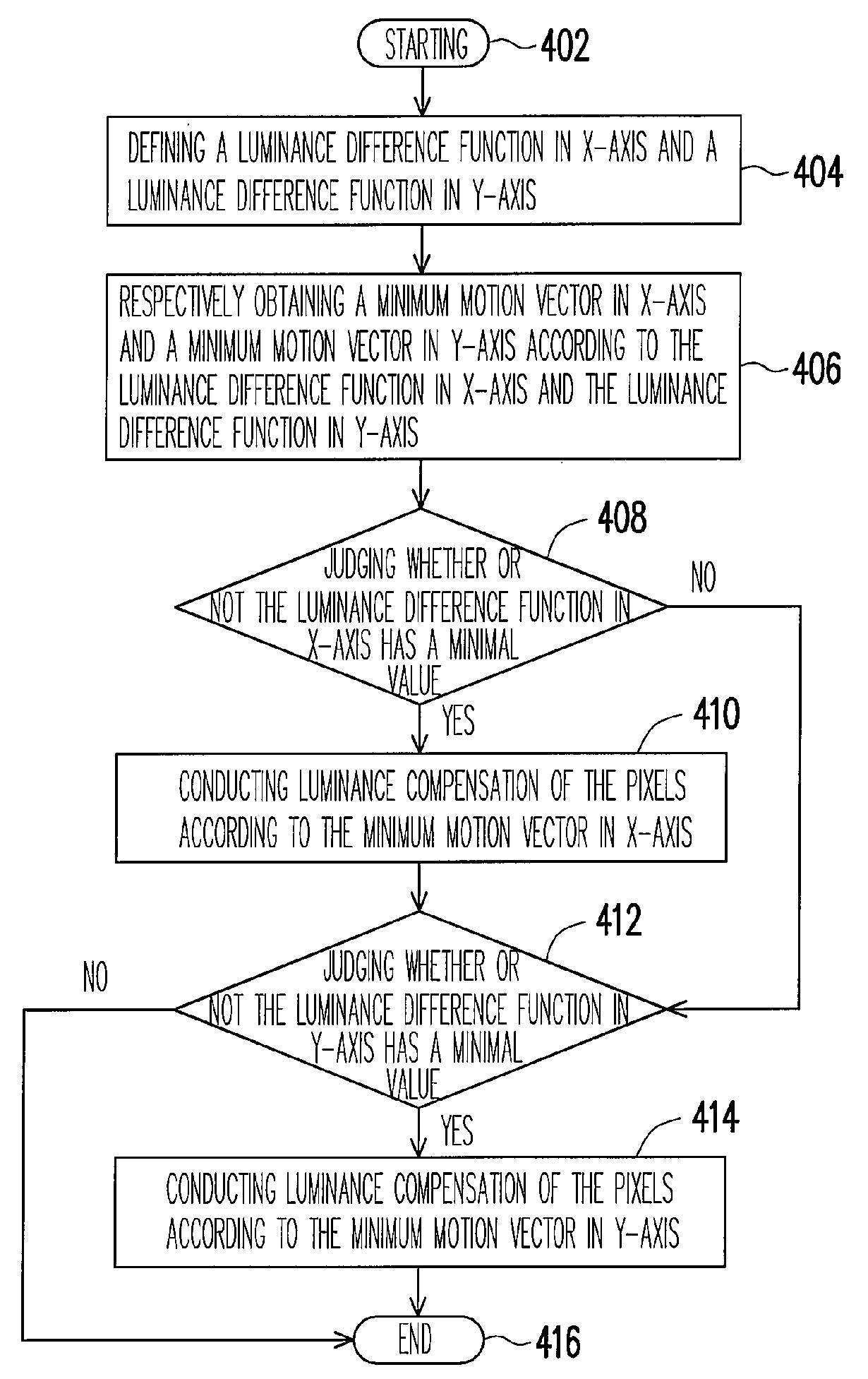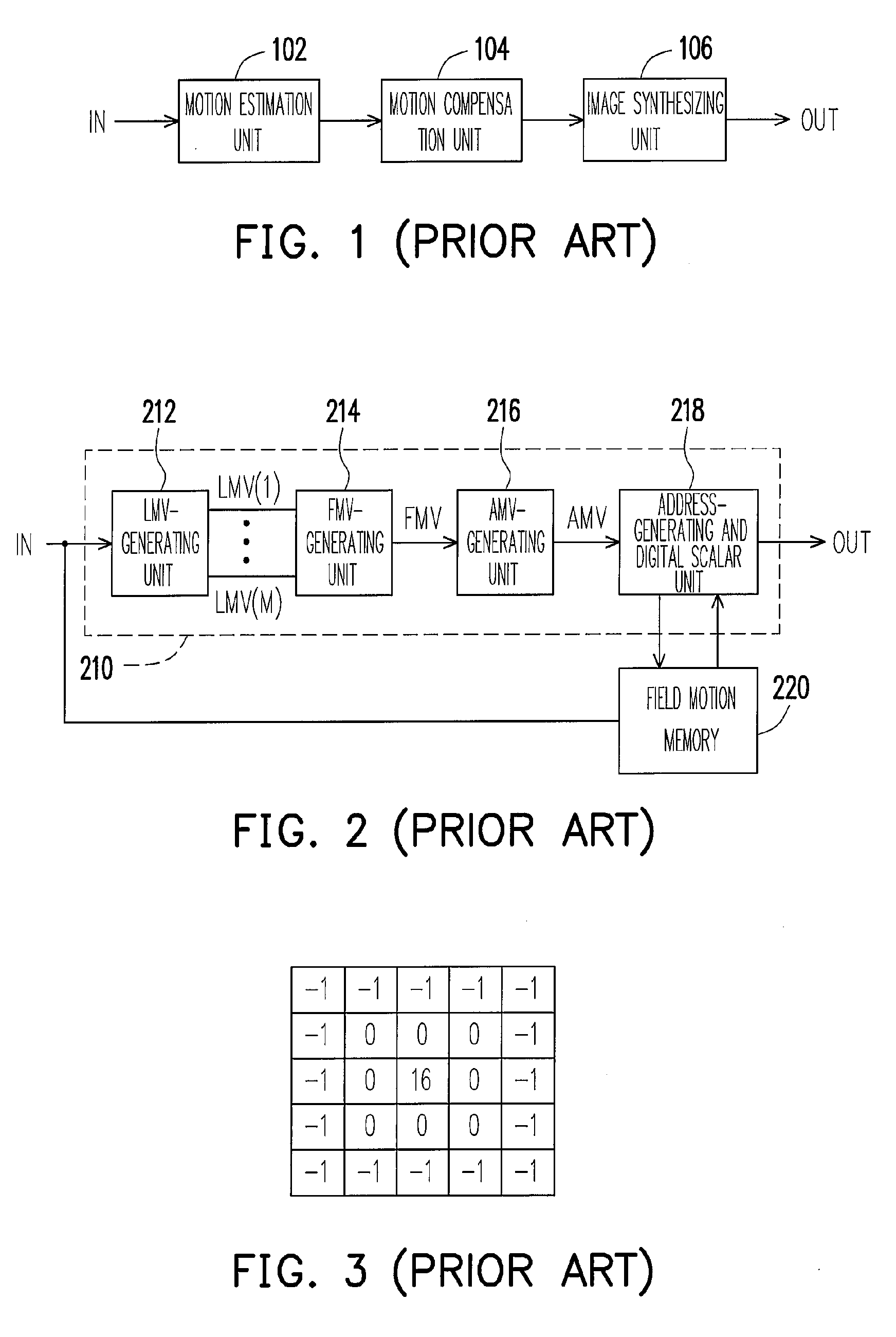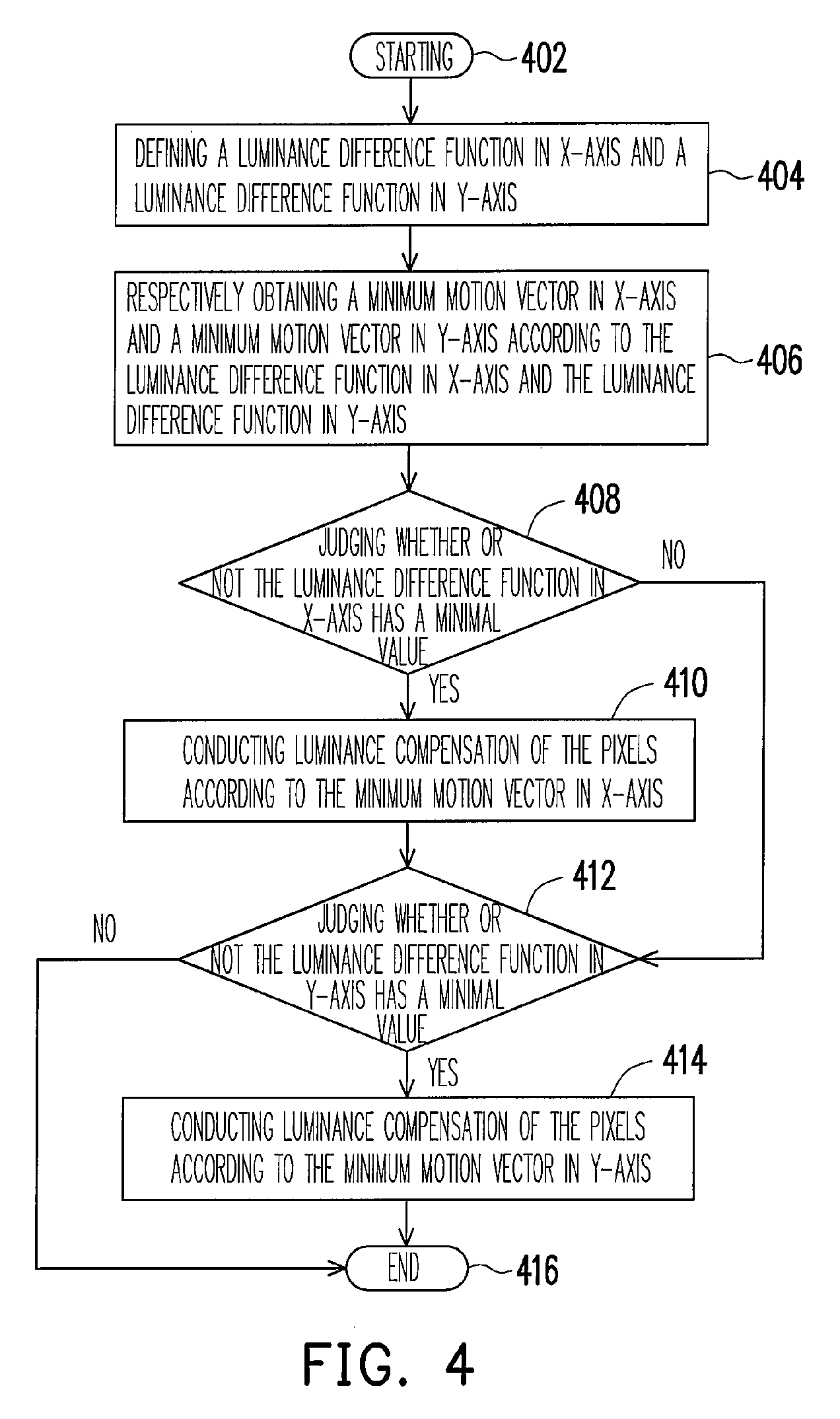Motion-oriented image compensating method
a compensation method and image technology, applied in the field of image compensation, can solve the problems of largely degrading image quality, image captured would get blurred, image output from conventional digital cameras are still quite blurred, etc., and achieve the effect of effectively promoting image quality, sharpness of image edges, and promoting image sharpness
- Summary
- Abstract
- Description
- Claims
- Application Information
AI Technical Summary
Benefits of technology
Problems solved by technology
Method used
Image
Examples
Embodiment Construction
[0020]Reference will now be made in detail to the present preferred embodiments of the invention, examples of which are illustrated in the accompanying drawings. Wherever possible, the same reference numbers are used in the drawings and the description to refer to the same or like parts.
[0021]In the following, a motion-oriented image compensating method is described, which is suitable to sharpen the image edges generated by an image data with a resolution of M×N pixels, wherein M and N are natural numbers. In order to calculate global motion vectors (including horizontal motion vector and vertical motion vector) between the present frame and the last frame available for further conducting image compensation, a motion estimation approach must be introduced first. A DIS system then would shift the pixels of the present image to stabilize the image sequence. In addition, to obtain instant global motion vectors, a color-based motion estimation scheme employed. In the following, the imag...
PUM
 Login to View More
Login to View More Abstract
Description
Claims
Application Information
 Login to View More
Login to View More - R&D
- Intellectual Property
- Life Sciences
- Materials
- Tech Scout
- Unparalleled Data Quality
- Higher Quality Content
- 60% Fewer Hallucinations
Browse by: Latest US Patents, China's latest patents, Technical Efficacy Thesaurus, Application Domain, Technology Topic, Popular Technical Reports.
© 2025 PatSnap. All rights reserved.Legal|Privacy policy|Modern Slavery Act Transparency Statement|Sitemap|About US| Contact US: help@patsnap.com



